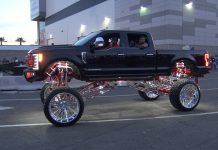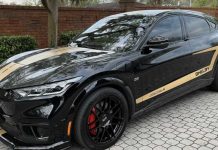Here’s the latest reader question, along with my reply!
Jim asks: Had a dream about a Jaguar E-type that I rode in long ago. Was shocked by how much its burly DOHC inline six rumbled like a V8 muscle car. But in the desirable golden era from the early 1990s to early 2000s, there aren’t many non-exotic inline six sports cars to choose from. The Lexus SC300 comes to mind, though it was made only in a coupe. Nissan’s Skyline, with its legendary RB26 inline six, wasn’t offered in the US, though some individually imported, right-hand-drive models sell in the $30,000 to $60,000 range. BMW’s Z3, sold in the US from 1997 to 2002 with inline sixes ranging from 2.3 to 3.2 liters, seems like the most accessible choice. Roadsters (sans the high-end M-package, but with convertible tops) can be found in the $5,000 to $10,000 range. Am I missing any great six-cylinder sports cars from this era?
My reply: You’ve already named most of them, unfortunately. In-line sixes have become scarce – and expensive – for the same reason that V8s have become scarce and expensive. I bet you already know the answer . . .
Government.
Specifically, government regulations pertaining to miles–per-gallon minimums and “emissions” (chiefly, of carbon dioxide) maximums. The larger the engine, the more fuel it uses and the more “greenhouse” gasses it produces. Leaving aside the legitimacy of government having anything to do with stipulating the mileage any car must deliver – and the bogusness of carbon dioxide “emissions” – the fact remains these two items exert a powerful incentive to not manufacturer engines larger than about 2.0 liters, which pretty much means four cylinder engines – the power lost by the reduction in size made up for by an increase in boost (i.e., turbocharging).
But they don’t have the same charm, eh? An inline six has a particularly excellent sound – as does a V8. But these sounds are a memory of that better, vanished time Rush wrote the song about.
Luckily we can still get those sounds – just not in something new and inexpensive!
. . .
Got a question about cars, Libertarian politics – or anything else? Click on the “ask Eric” link and send ’em in!
If you like what you’ve found here please consider supporting EPautos.
We depend on you to keep the wheels turning!
Our donate button is here.
If you prefer not to use PayPal, our mailing address is:
EPautos
721 Hummingbird Lane SE
Copper Hill, VA 24079
PS: Get an EPautos magnet or sticker or coaster in return for a $20 or more one-time donation or a $10 or more monthly recurring donation. (Please be sure to tell us you want a magnet or sticker or coaster – and also, provide an address, so we know where to mail the thing!)
If you’d like an ear tag – custom made! – just ask and it will be delivered.
My latest eBook is also available for your favorite price – free! Click here. If that fails, email me at EPeters952@yahoo.com and I will send you a copy directly!











Let’s not forget the E36/46 M3, those things were beastly and can make big power when turbocharged
And the Hudson Hornet!
Hey, thanks for reminding me!
Let’s not forget that, at least to my understanding, that most (or all?) semis are of the inline-six diesel configuration, and I assume will be for many decades to come
I wonder how much planned obsolescence plays into the demise of the I-6? Inline sixes were always the most durable of engines- having 7 main bearing, for 6 cylinders- vs. the V-8’s 5 mains for 8 cylinders, or the V-6’s 4 mains for 6 cylinders. They produced great torque. They allowed for a simple and uncluttered engine compartment layout…..
The Ford 300ci I-6 is probably my favorite engine of all time. They had the longevity and power comparable to the good old diesels- and could easily go half a million miles, without any degradation, thanks to their use of timing gears instead of a chain or [snort] belt. They’d easily power everything from a lowly F150 pick-up to big trucks and required little maintenance.
Writing this just made me realize: What a great engine for a post-apocalyptic vehicle! Rebuild an old one, and it would last the rest of one’s life with little more than fuel and oil!
Even the Chrysler Slant-6 can be easily modified to produce serious horsepower! Youtuber Uncle Tony[‘s Garage] made a video explaining their power curve, and once it is understood, it is amazing how puch performance can be extracted from these engines (Who’d have thunk it? I always thought they were feeble).
It makes me mad when I think of all the fine old 60’s cars that had their I-6’s ripped out and a V-8 swapped in to turn them into “muscle cars” and increase their value, ’cause now an old car with an I-6, which used to be ubiquitous, are rare. Id take the I-6 any day!
The demise of the I-6 is probably the worst thing to ever happen to cars and trucks in automotive history! If they still made pick-ups with ’em, they wouldn’t need so many of these monstrously (and needlessly) complicated and expensive diesels! We could again have cheap and simple but powerful trucks!
Nunz, not all straight sixes had six main bearings. In fact one of the most long-lived designs which you mentioned, the Mopar slant-six, has only four mains. However they are oversized relative to the size of the engine and are very durable. With even minimal care those engines will run just about forever and can even keep running a long time when seriously neglected.
Chrysler used to offer a “Hyper-Pack” package (dealer or owner installed) which bumped up horsepower quite a bit using factory parts. Due to the engine’s layed-over design the intake could be engineered with long runners to provide a ram-air effect, kind of a poor man’s supercharging.
https://www.allpar.com/mopar/hyper-pak.html
AMC’s early line of straight-sixes also had four main bearings, but those were a pre-war designs later adapted for overhead valves and even an aluminum block. The “modern” six-main AMC inline six was produced, with numerous engineering changes of course, from 1964 (Rambler 232) through 2006 (Jeep 4.0).
Come to think of it, Jason, I do remember someone telling about the 4-main 6’s before/…maybe it was you!
Ah, yes, that Jeep 4.0 was a beast! Sad that are no truly comparable replacements for these injuns; heck, they didn’t replacing….just someone to keep making them, and a sane world where such wouldn’t be prohibited.
The third and fourth generation Supra had an in-line 6 and was made from ’86 through the end of the ’02 model year. The newly introduced one has gone to a V6.
Not that it was a sports car by any means, but I used to have a 1978 Ford Fairmont station wagon with a 200 cubic inch I6. Not much horsepower, but ample torque and it drove very well!
I love that engine. Stock it is an unlovely beast with a hideous log intake manifold and terrible fuel distribution. But with port injection or a little milling and a couple more single barrel Autolite carbs, it woke up into a great little machine. Light weight too. I read about Ak Miller hopping them up in the 70’s and swapped one into a 49 Ford pickup. Made a GREAT daily driver.